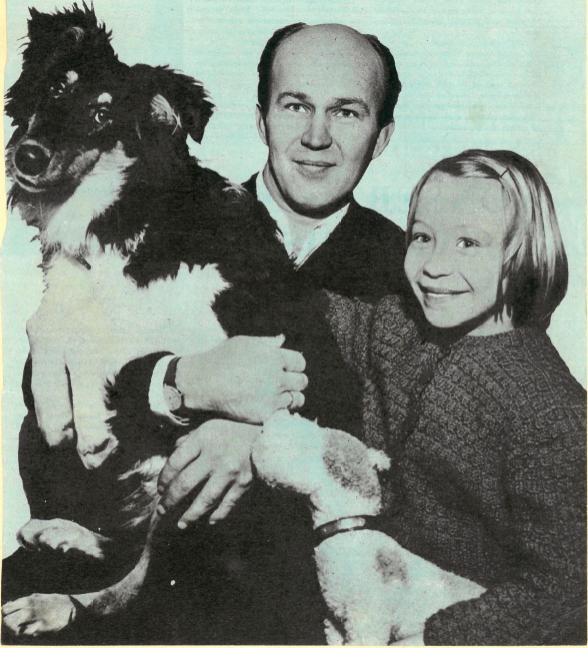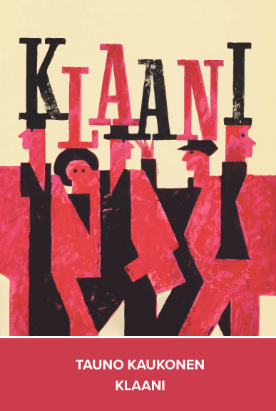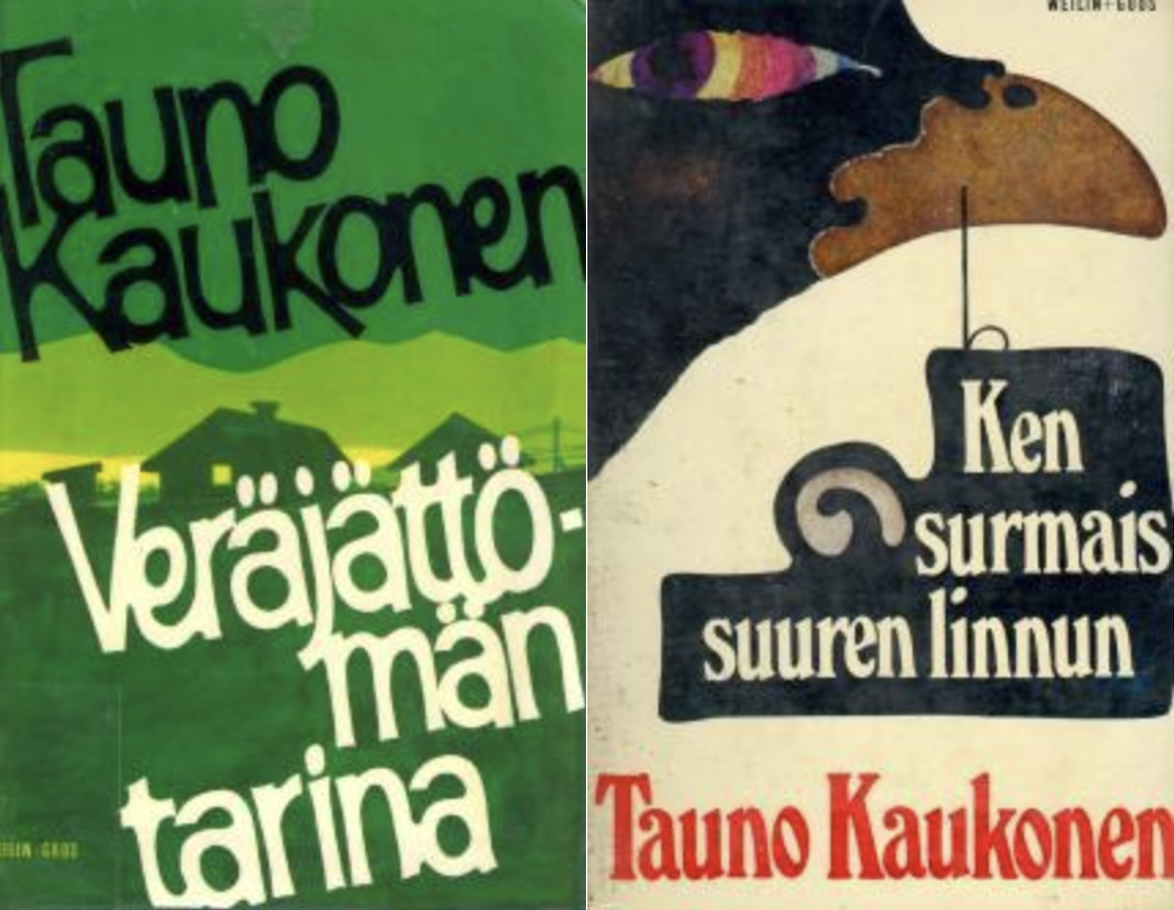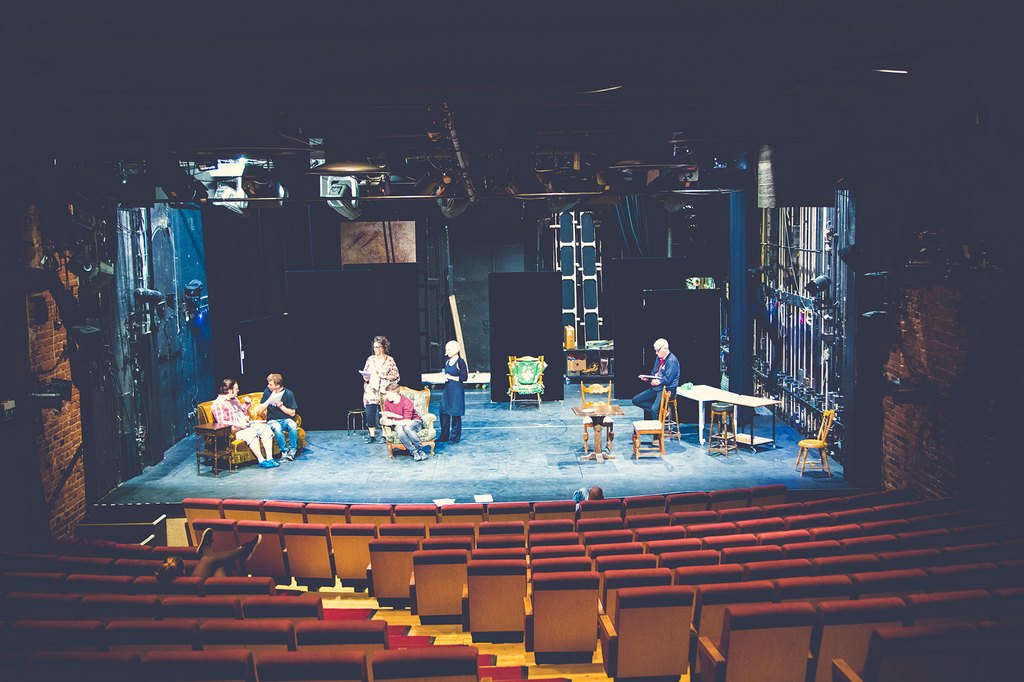In English
Klaani- 60 years anniversary


Klaani- story of Sammakko family
What connects Mika Kaurismäki, Juice Leskinen, Tauno Kaukonen, Anssi Tikanmäki, Tampere, and Pispala? The answer is the novel Klaani – Tarina Sammakoitten suvusta (The Clan – Tale of the Frogs), the first novel written by the Tampere-born working-class author Tauno Kaukonen in the early 1960s. The highly praised novel was a bestseller and a notable literary work of its time. Friends of literature, Finnish music, and movies still know what the book is all about, but the younger generation might not be as familiar with the story of Klaani.
What makes Klaani special is the authenticity with which the author describes the environment and people in the book, as well as the vivid language and brilliant storytelling. The book was refined through multiple drafts, until, on the fifth attempt, the author was satisfied with the end result, and gave it away for publishing. At that point, he had been working together with book editor Ville Repo for some time. Ville Repo seemed to have a nose for talent: after all, it was he who, five years earlier, had found Kalle Päätalo after Päätalo had been rejected several times.
Beginning
Klaani was published in 1963. Before that, Tauno had already won the Pirkanmaa Writing Competition three times (his brother Veikko Kaukonen had won twice). The groundwork for becoming an author had already been laid in Tauno’s childhood: his Finnish teacher had told him that he was never going to become a writer, and gave him the failing grade, 4. Knowing Tauno’s personality, that must have really bothered him. In the course of his life, Tauno had obtained the ingredients for a story, and he had to write it. Then he met his wife Taimi, the right person to support his literary ambitions, and it became clear that a story of some kind was forming on paper. I wonder, did even Tauno himself realize what he was in the process of creating when he was writing his story?






Success
According to the book sales index published by bookstores in regional newspapers, Klaani by Tauno Kaukonen was in second place in the sales index of 1964, right after Maria Jotuni‘s Huojuva Talo and even before Päätalo’s work. Kaukonen was compared to Fjodor Dostojevski and Mark Twain. The critics gave almost exclusively glowing reviews. In 1964, one year after Klaani was first published, the 35-year-old Tauno Kaukonen was about as successful as a young new writer can be in Finland. He received a writers’ grant, and Klaani won the Literature Prize of publisher Weilin&Göös. Aito Mäkinen signed a movie contract for Klaani. The movie, however, was never filmed because of the actors’ strike of 1963-1965. What is known of the planned casting for the movie is that the female lead character Mirja was supposed to be portrayed by actress Carola Standertskjöld. In many ways, Klaani received a lot of public attention at the time.
The Clan
The story of Klaani was a part of Tauno. It was rewritten many times, improving the result with each draft. Because of what had happened in his youth, things he had experienced, he was able to create a literary work about something he was clearly an expert on. The family of criminals in the novel, Sammakot, were portrayed in a landscape like that of Pispala. Tauno knew the world so vividly described in Klaani inside and out, because it was the world, he himself had lived in. A post-war working-class city, where fathers hadn’t come back home from war, or were traumatized by the horrors they had seen and had problems with alcohol and drugs. Mothers who did arduous work in factories, were away from home, and often provided for their families with their low wages, hardly managing to pay attention to their children after a long hard day at work. Their focus was on surviving everyday life.
Numerous studies have been carried out on the subject. Tauno wasn’t the only child or young person living in the Tampere of the 1940s, who later in life developed into a great artist in his or her own field. Fortunately, it seems that something great can sometimes come from bleak circumstances. After his biggest crime and imprisonment, the young Tauno cut ties with the world of Klaani and broke out of his downward spiral of crime and prison, which a lot of people remained trapped in for the rest of their lives.
He decided to go to the place where his mother had grown up and moved to the home of the Soppela family (his mother’s maiden name was Soppela) in Petäjävesi. That is where he met his future wife, Taimi. The couple married in 1952, and after a few years of working in the countryside, they moved to live with Tauno’s mother Helmi at Keskustori 1, Tampere. They had nothing but a load of potatoes with them. This was the start of another new chapter in Tauno’s life. In 1952-1963, Tauno worked on construction sites and as a painter. He was also an active trade unionist. This part of Tauno’s life was characterized by great restlessness. He and his wife moved once a year, to Kaivokatu, Pinninkatu, Vuohenoja, Kulju in Lempäälä, Pispala, and Metsäkylä. It can be said that his first success in the Pirkanmaa Writing Competition in the late 1950s was what finally set him on his way to becoming a professional writer.
I know that several of the characters in Klaani are based on real people. I know what kind of prison sentence my father was given before he decided to change the course of his life. I know that he had been beaten in prison, kept in a bear cage, starved. Unfortunately, I didn’t know about any of this until after my father had passed away.
The rest of his life was overshadowed by melancholy and fatigue. He had a strongly dichotomous and black and white personality. He strove for absolute honesty, also as an artist. An artist who refused to accept an artist’s pension. On the one hand, he appreciated his own accomplishments, on the other, he was out of balance with himself. Some part of him had been left behind in captivity.
When I look at the world now through the eyes of a 50-year-old, I understand what a big step it was for my father to leave behind the world of crime, to change his life, settle down, have a family, and believe in himself as a writer.
He was a prisoner of his own time. Thankfully, the world has changed since the 1960s, let alone the 1940s. People are no longer judged by the mistakes they made in their youth, we have learned to become more humane towards each other. Maybe Tauno didn’t want to commercialize his book by bringing up his past too much.
Mental fatigue, physical illnesses, and, eventually, a blood poisoning caused by an ulcer hastened Tauno Kaukonen’s death. He passed away at TAYS Central Hospital at the early age of 54. Even though Klaani is his magnum opus, his novels Ken surmais suuren linnun and Veräjättömän tarina are also immensely enjoyable to read. It is also noteworthy how different the books are, in terms of content and writing technique.
It should also be mentioned that the main character Mäki Pekka in the novel Ken surmais suuren linnun has a striking resemblance to the legendary car dealer from Tampere, Pekka Mäkinen. Both Tauno and Pekka were born in the 1920s and came from Koivistonkylä, Tampere. It would be interesting to know what made Tauno write and dedicate a couple of years of his life on a book with that criminal car dealer as a character.
In the year of Tauno’s death, 1983, Mika Kaurismäki and his team made contact about making a movie based on Klaani. Mika Kaurismäki’s film and Tikanmäki’s music have ensured the survival of Klaani’s story over the past few decades. A reprint of the book was released in 1986 and 2006, and in 2013 it became available as an ebook. It seems that Klaani is a timeless story that resurfaces here and there at regular intervals. In recent years, there has been interest in doing a theater project based on Klaani, and another reprint is being planned with a new publisher.
Now, in the year 2023, Klaani will be featured on the Frenckell stage of Tampere Teatteri, coincidentally on its 60th anniversary. A long time supporter of the project, writer-director Pasi Lampela is behind the dramatization. Thanks to the new theater manager Mikko Kanninen greenlighting the project, the play will have its first public performance on the 26th of October. To celebrate Klaani’s revival on its 60th anniversary year, the book has also been published as an audiobook read by Jukka Pitkänen. Media Potentia, the publisher of Klaani’s 6th edition, is organising a Klaani-themed concert featuring Anssi Tikanmäki and Päivi Portaankorva at restaurant Koski.
Experience and enjoy Klaani as a printed book, audiobook and movie, as well as through the movie’s soundtrack. 2023 is the year of Tampere’s culture and Klaani.
Petri Kaukonen
son of the author
Tauno Kaukonen
• Born in Tampere 11.8 2029 – passed away 8.8 1983
• Novels Klaani, Ken surmais suuren linnun, Veräjättömän tarina
• City of Tampere literature Awards 1963 (Klaani) and 1975 (Veräjättömän tarina)
• Finnish Literature Award 1976 (Veräjättömän tarina)
• Produced also short novels and theater plays

Klaani-romaani nyt verkkokaupasta
Julkaisutoiminnan sekä kulttuurin ja kirjallisuuden saralla toimiva Media Potentia Oy on kustantanut romaanin 6.painoksen. Juhlavuoden kunniaksi painettu teos on nyt tilattavissa myös verkkokaupasta.

